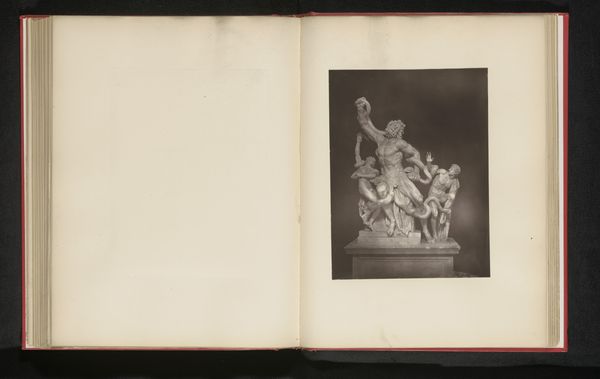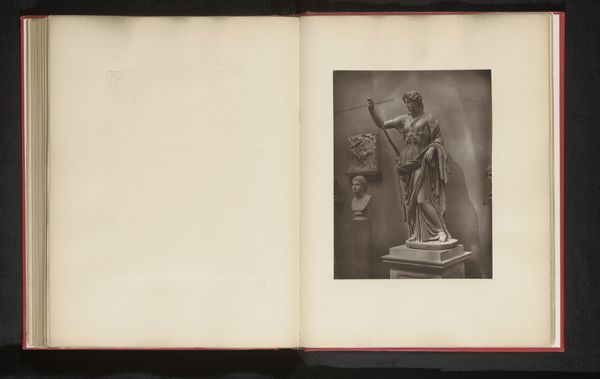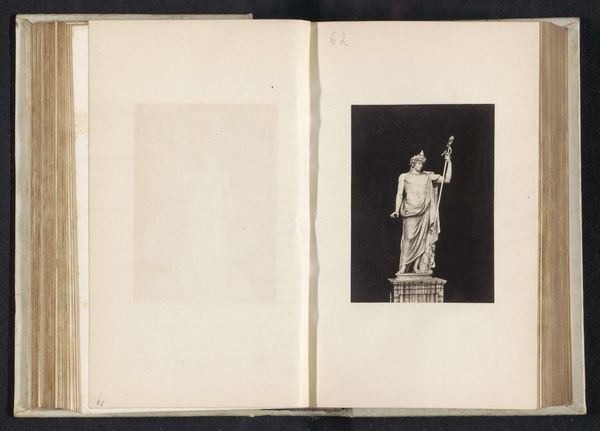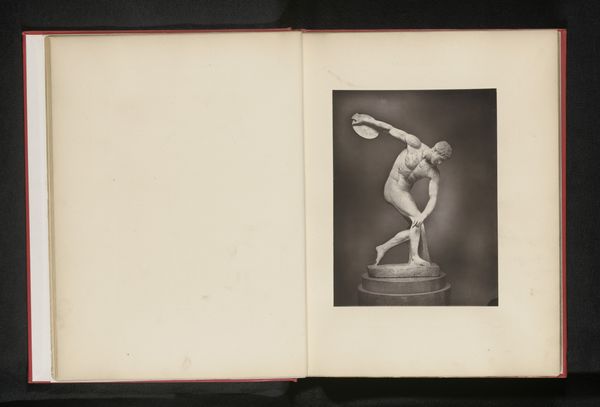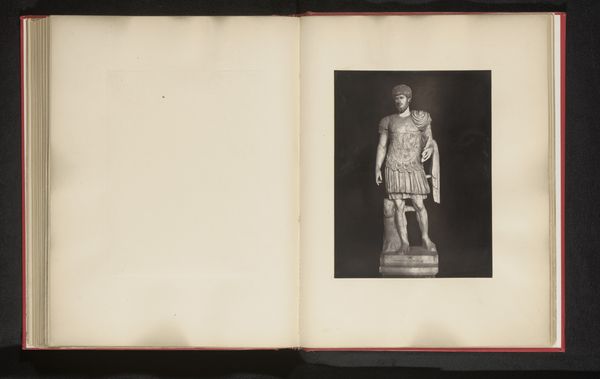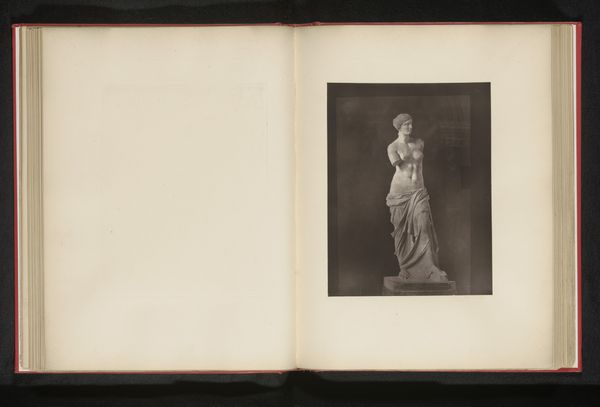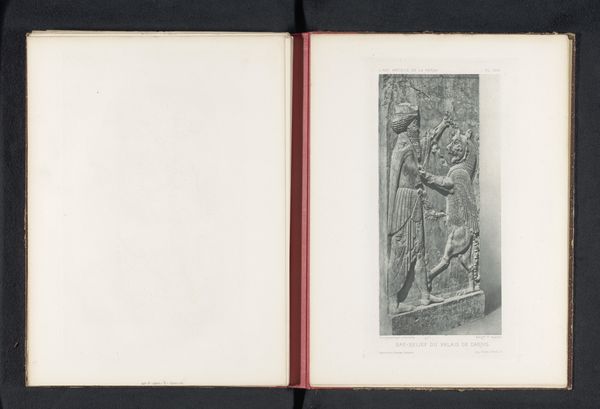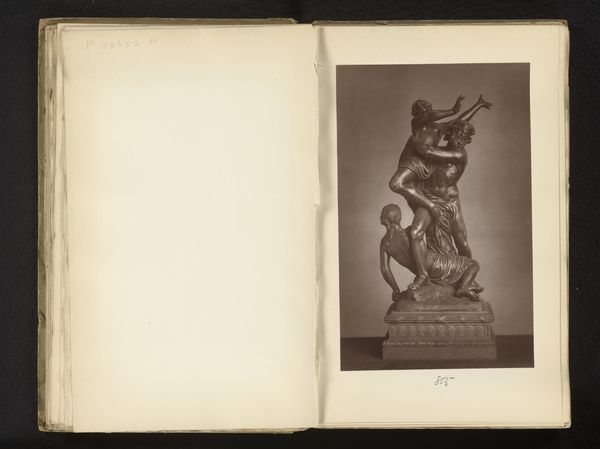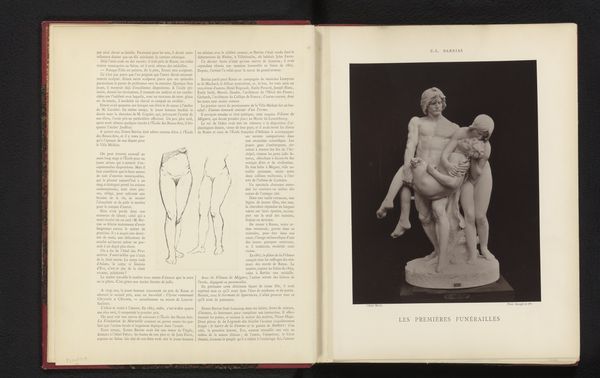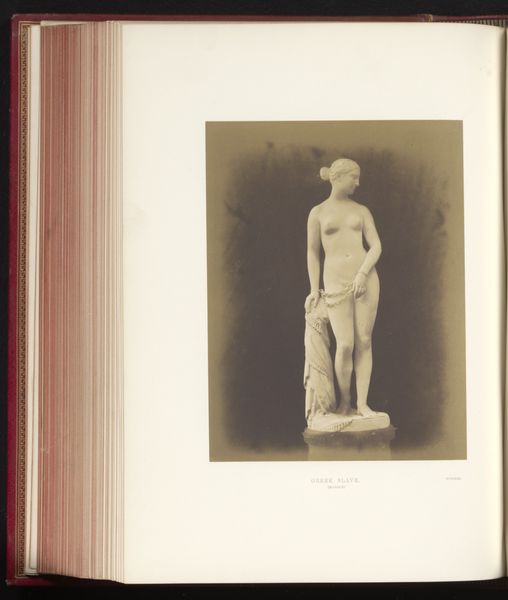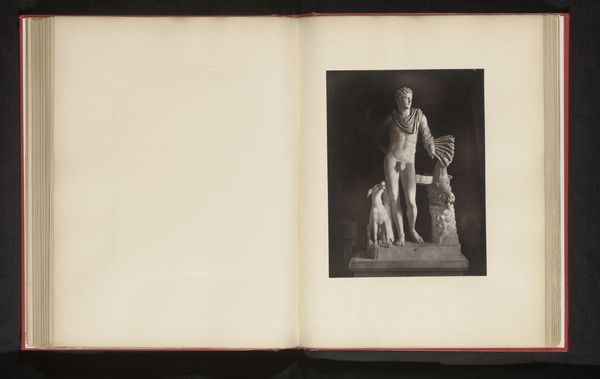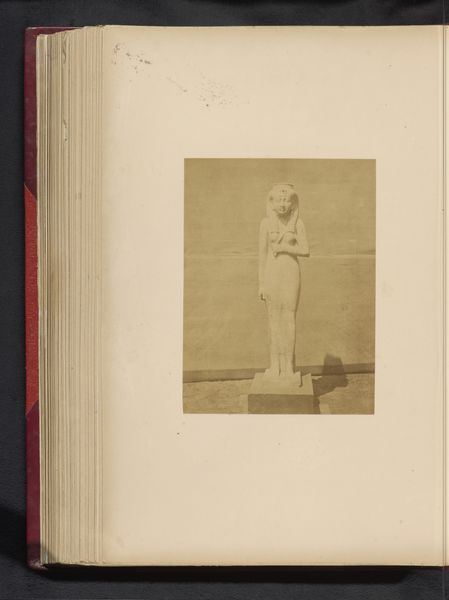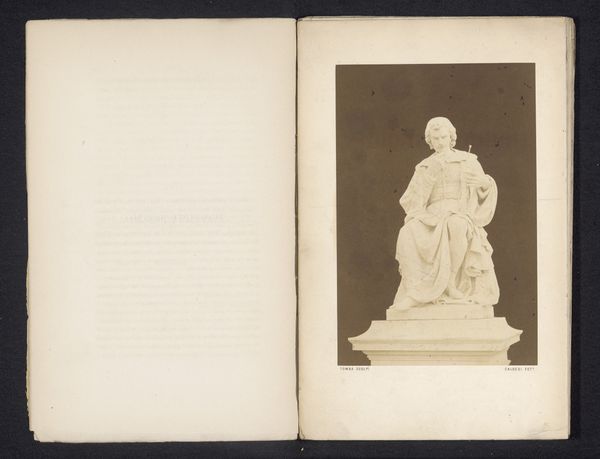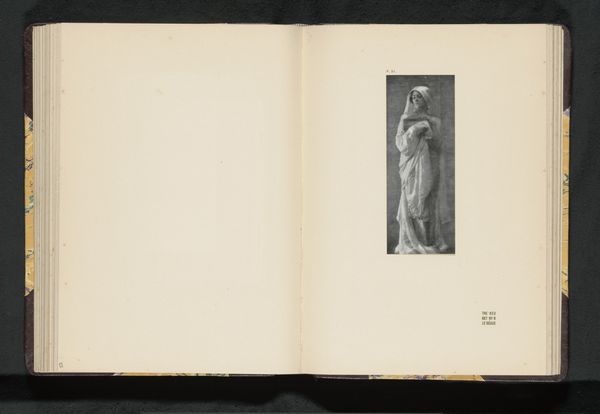
photography, sculpture
#
portrait
#
greek-and-roman-art
#
photography
#
sculpture
#
realism
Dimensions: height 198 mm, width 150 mm
Copyright: Rijks Museum: Open Domain
Curator: Here we see "Apollo van Belvedère", a photograph of a sculpture, dated before 1878, captured by Stephen Thompson. It’s presented within an open book. Editor: Immediately, I notice how poised and self-assured the figure seems. The drape, the contrapposto, all contribute to this sense of contained power, typical for the period and its societal embrace of classicism. Curator: Indeed. The statue itself, a Roman copy of a Greek bronze, was a powerful symbol. It came to embody ideals of classical beauty and reason, playing a significant role in artistic and political discourse. The piece became intrinsically linked to ideas of European identity and superiority. Editor: Precisely. Looking at the statue now, I wonder about its legacy. What does this image evoke for contemporary audiences? What’s troubling to me is the ease with which we inherited these notions of beauty, completely divorced from discussions about inclusivity and otherness. It perpetuates this hierarchy of ideals that is often exclusionary. Curator: Thompson's photograph captures the enduring allure of the original statue, however. Photography at that time was just establishing its role in documenting and disseminating artistic treasures, influencing popular taste and promoting classicism throughout society. Museums became accessible in a new way. Editor: I agree, the photograph presents the Apollo as an aesthetic ideal and historical artifact. The sculpture looks stunning but let's recognize the complex layering of power dynamics implicit here. Its perfection almost feels prescriptive; like it wants you to follow the lines of patriarchy, to celebrate it. Curator: Absolutely. Understanding the artwork’s influence helps us decode these cultural values inherent in historical artistic representation, revealing why this specific piece of art was embraced by those in power. It reveals what traits were being elevated. Editor: Seeing the Apollo’s photograph now really highlights the historical constructions of beauty and the canon itself; as well as questions about who benefits and what we normalize as a result. It is important that conversations such as this one exist, and continue, for all classical work, no matter the medium of the original piece.
Comments
No comments
Be the first to comment and join the conversation on the ultimate creative platform.
